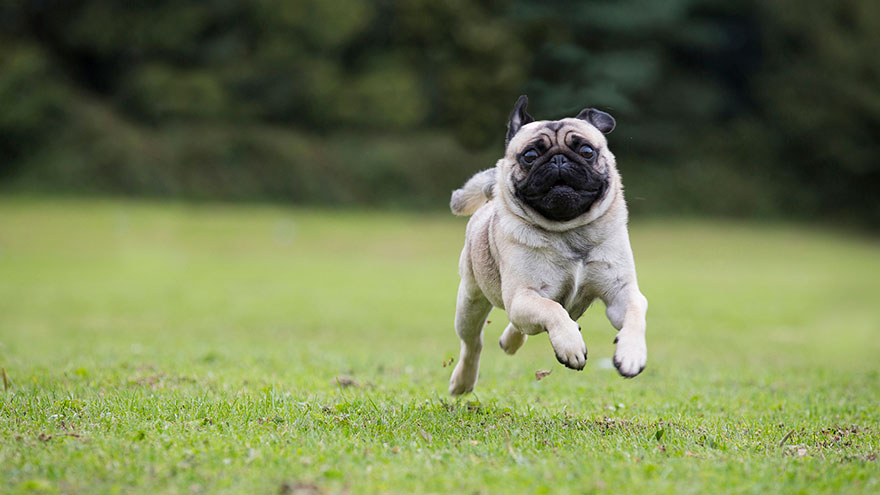Pug Training Guide
The Pug, a small compact dog with a playful personality, can be a wonderful pet and may prove to be one of the easier dogs to train due to its intelligence. However, this can be a somewhat stubborn breed, especially if the dog feels you are not giving it enough attention.
For those who live in an apartment or small home and have limited yard space, the Pug might be just the right companion because they will do well with a regular walk.
How to Train Pug
You may want to consider paper training your Pug because they do not do well in extreme weather conditions, hot or cold. The short snout of the breed can lead to some breathing problems. Paper training can be the answer to this, because it may eliminate the need to take your dog outside during bad weather. As with any new dog that is added to the family picture, you may wonder at times if getting a puppy was a good idea.
However, if you have patience with this active little dog, you should find that the attention and fun he provides in return would be worth the effort. Buy a good leash and collar for those times when you need to take your dog outside. For many purebred dogs, crate training is recommended as part of the housebreaking process. A crate gives your pet a safe haven it can go to during times when it needs to be alone.
In addition, your pet will naturally want to keep the “den” clean and this can make housebreaking or paper-training a lot easier. Some owners also report that if their pet has a space and toys that are definitely his own, the amount of destructive chewing on “off limits” items is reduced. One thing to keep in mind as you train the Pug is that you should not be overly protective or pamper your pet, in spite of his size and appearance.
The Pug may come with a bit of stubbornness that new owners will have to work through but remember this breed is smart and will learn quickly. Working with the Pug on some basic obedience items may be a good idea.

The best place to start in this area is with a good breeder who has given some effort to socialization of the puppies in his or her care. This solid start in making the young dog comfortable around people and other dogs is a key in having a good relationship with your Pug.
This intelligent breed that may learn a few tricks if you make them fun and challenging at the same time. But remember to reward your Pug because the dog will be eager to please and expect you to show that you are happy with the results. In fact, small biscuits and good quality treats can serve a double purpose, as rewards and in helping to keep the teeth clean.
If you are thinking about showing your Pug, be sure to talk to your breeder and get some names of people who are experienced in this area. We recommend reading all you can about this area of “training” and you should definitely talk to people with experience in showing Pugs.
Some of the key items to look for when considering a show Pug are thin, small ears that are either “rose” or “button;” a tail that should curl tightly over the hip (a double curl is ideal); and the back legs and hindquarters should be balanced and straight.
For best show results, the coat should not be hard or wooly, but moderately short and glossy. Any markings and black on the face should be clearly defined.
The dog should appear in front of people with charm and dignity, though a top Pug will have playfulness as part of its personality as well.
Read More About Pug
- Pug Breed Information
- Pug : 10 Most Common Questions
- Pug Health Guide
- Owning a Pug : Breeder Recommendations

